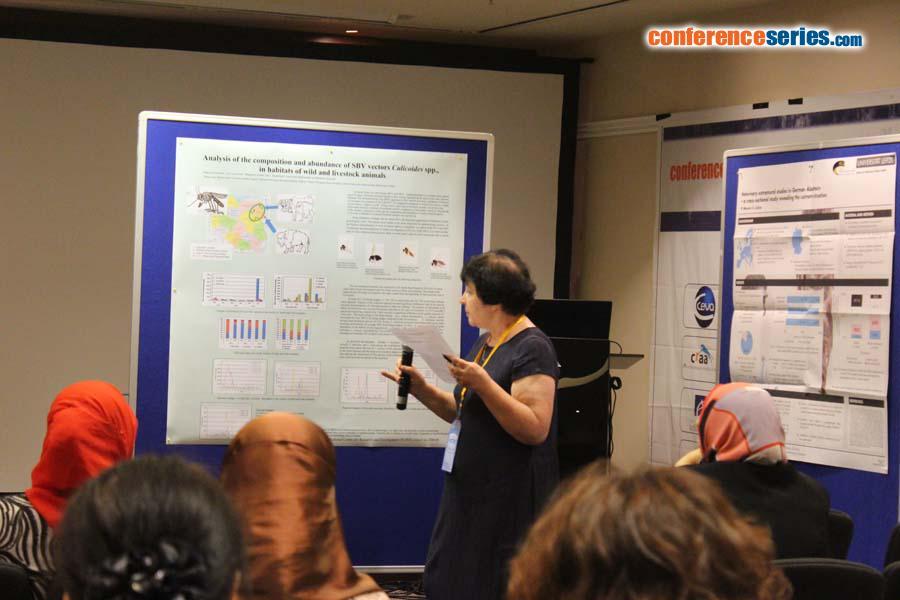
Maria Grochowska
Maria Curie Sklodowska University, Poland
Title: Analysis of the composition and abundance of SBV vectors Culicoides spp., in habitats of wild and livestock animals
Biography
Biography: Maria Grochowska
Abstract
In recent years, two arboviruses (BTV and SBV) causing diseases in ruminants have spread across Europe, which has aroused interest in their vectors representing the genus Culicoides (Insecta, Diptera). The Schmallenberg virus (SBV) appeared in 2011 and the maximum incidence of infections of ruminants was reported in 2012 and 2013. Investigations conducted in Poland have shown a higher seroprevalence degree in wild-living (bison, deer) than in livestock animals. Given the close relationship between infection of ruminants and the competence of individual vectors in transmission of the viruses, comparison of the species composition and abundance of insects from the genus Culicoides in habitats of wild and livestock animals was carried out. The entomological research was conducted in the Podlaskie province in 2014-2015 in three cattle farms (rural environment) and two bison reserves (forest environment). The insects were captured into OVI traps activated for one night a week from the beginning of April until the end of November. In total, 632,124 biting midges, i.e. 105,342 in cattle herds and 526,782 in the bison habitats, were captured. Analysis of the collected material revealed significant differences both in the species structure and abundance of Culicoides present in these two habitats. The number of individuals in the forest environments was over ten-fold greater than that in the cattle environment, i.e. 6753 and 6463 specimens/night/trap, respectively. There was also a significant difference in the quality structure of Culicoides. The insect groups in the forest habitat were clearly dominated by C. achrayi, which accounted for over 50% of all biting midges collected in that environment. C. obsoletus was the second most numerous species (28.1%). In turn, C. obsoletus occurred most numerously
in the cattle breeding environment (on average 78% of all biting midges). In 2014, C. punctatus exhibited great abundance in one habitat (in the Augustowski County - 70% of all Culicoides). Other species, including C. achrayi, accounted for 5.2% of the Culicoides composition collected in the animal breeding environment, 4/5 of which were noted in the Ostrowski County in 2015. As shown by the literature, besides C. obsoletus and C. punctatus, also C. chiopterus, C. dewulfi, C. pulicaris, and C. nubeculosus are well-known SBV vectors. In the light of our research, a question arises about the role of C. achrayi in the transmission of the SBV virus. Its high abundance in the forest habitats and the high seroprevalence degree noted in bison (up to 80% of the population) may indicate the importance of this species in the transmission of the virus. Further research on this issue could provide an answer to the question.



